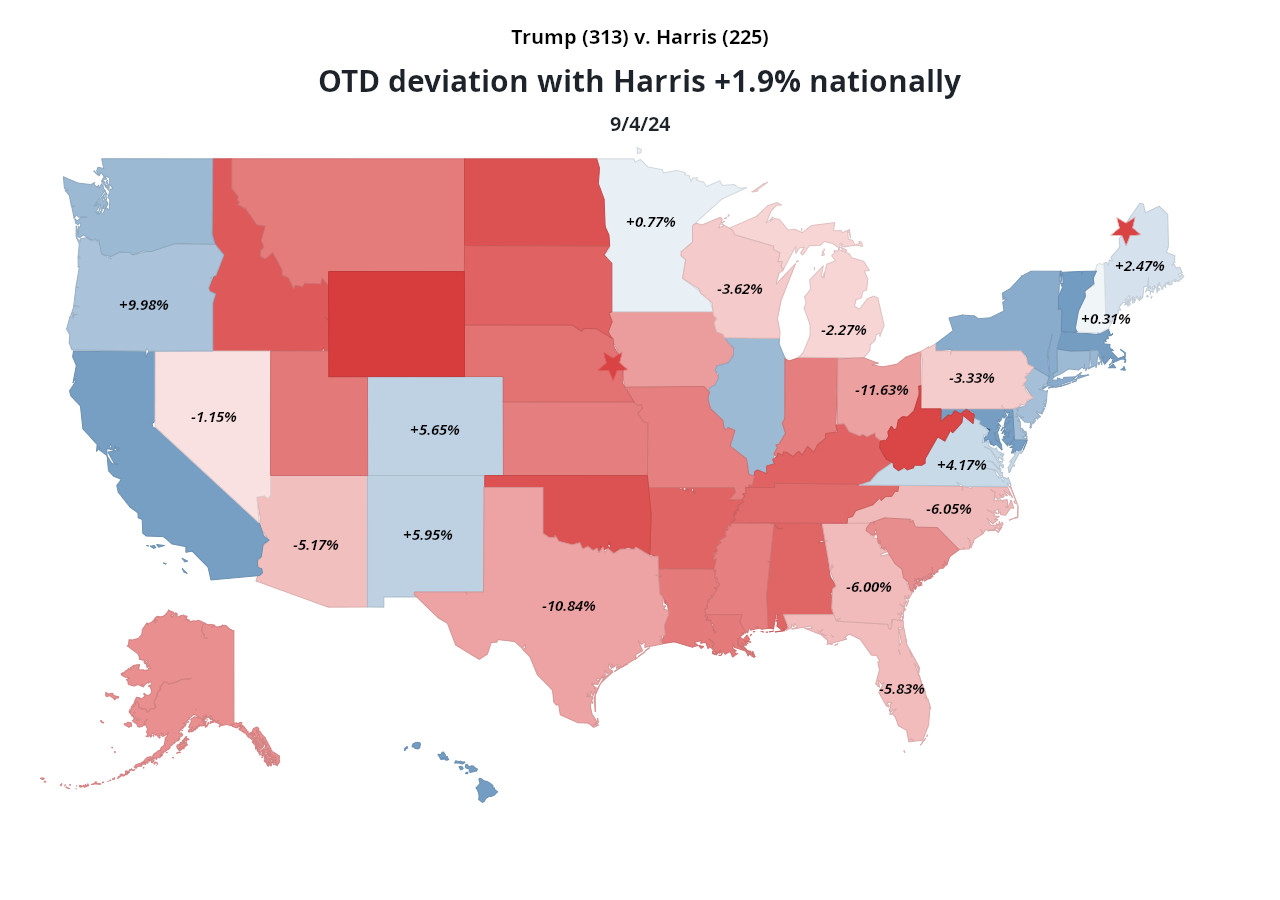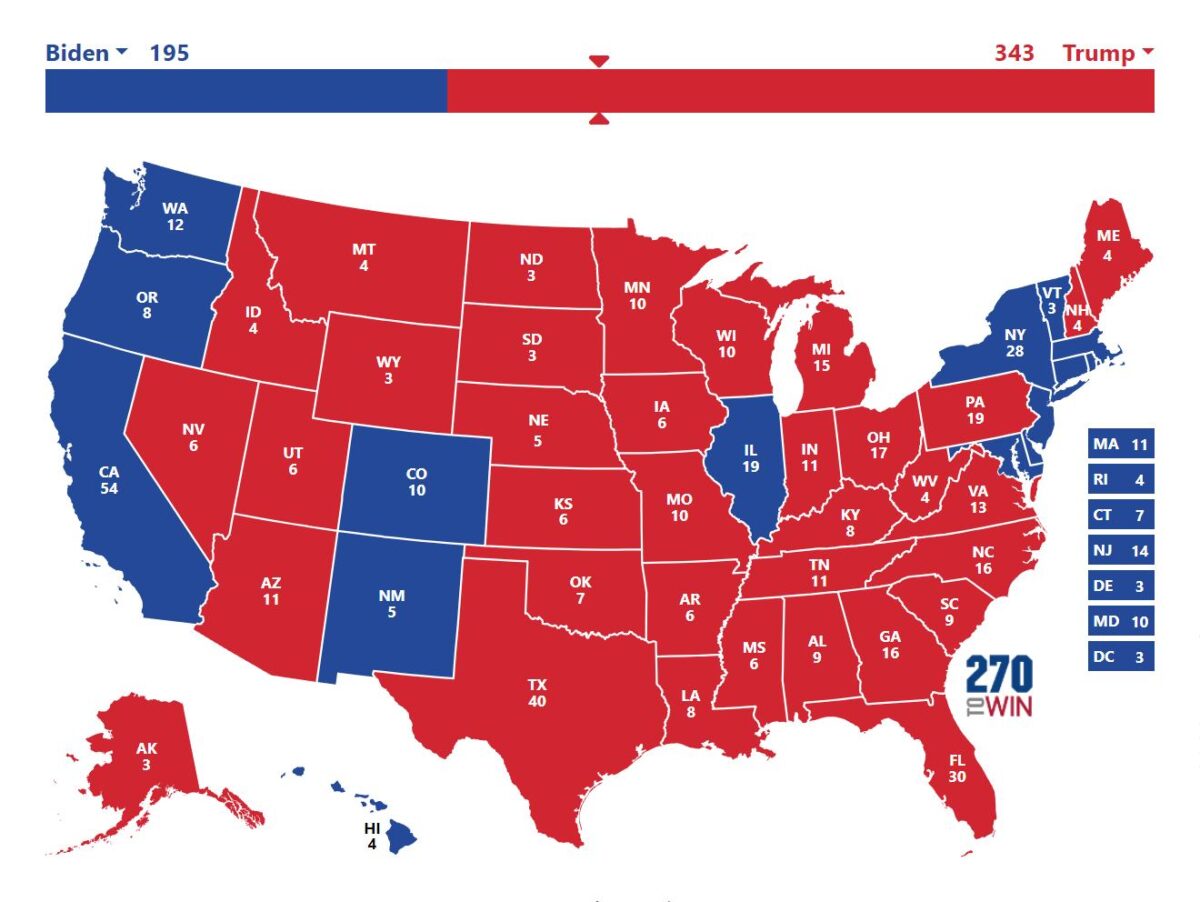Dick Cheney is voting for Kamilla.
Kamilla has nothing left and is collapsing, so it’s Russian collusion again.
Kamilla peaked at +1.9% when Hillary lost at +3.9% and Joe squeezed by at +7.0%.
They tried to assassinate Trump, but failed, so getting rid of Joe was the only way.
They literally pulled the plug on grandpa Joe Biden, Democrats are a terrible people.
Biden lost Minnesota to Trump, that’s the reason they picked Walz, to take it back.


2024 presidential election, OTD deviation model with Kamala +1.9% nationally for 9/4/24.
It’s clear that dropping Biden for Kamala was a wise move, but it may not be enough.


2024 presidential election, OTD deviation model with Biden -3.1% nationally for 7/21/24.
7/21/24 being the day Biden was forced to end his presidential campaign.
Predicting the 2024 U.S. Presidential Election: A Deviation-Based Model
Predicting election outcomes is always a complex task, especially in highly competitive states where margins can be razor-thin. To forecast the results of the 2024 U.S. Presidential Election, I’ve developed a model that relies on past election data from 2016 and 2020. This model leverages deviations between the national polling averages and the actual results in key battleground states to create a predictive framework for the 2024 election.
The model works by first analyzing how much the results in states like Arizona, Georgia, and Pennsylvania deviated from the national polling averages on the same day in 2016 and 2020. For example, in 2016, Hillary Clinton led the national polls by 3.9% on September 3rd, but ultimately lost Arizona by 3.5%, leading to a deviation of -9.00%. In 2020, Joe Biden had a 7.2% lead on the same day but won Arizona by just 0.3%, resulting in a deviation of -6.90%. By calculating the average deviation across these two election cycles, we can apply this deviation to the current polling averages to predict how the 2024 election might unfold.
This model includes three prediction methods: one using the average deviation from 2016 and 2020, one using only the 2016 deviation, and another using the 2020 deviation. By comparing these predictions, we gain insight into potential outcomes based on historical trends. For instance, applying the average deviation to Kamala Harris’s current polling average of 1.9% on September 3rd, 2024, suggests that she might narrowly lose Arizona by around 6.05%. Alternatively, using just the 2016 or 2020 deviation alone yields slightly different outcomes, allowing us to see how changes in the political landscape might influence results.
While this model provides a data-driven approach to forecasting, it’s important to recognize that elections are influenced by a myriad of factors, including voter turnout, late-breaking events, and changes in public sentiment. Therefore, while the deviation-based model offers a structured method for prediction, it should be considered alongside other factors and models to form a comprehensive election forecast. As we get closer to Election Day, continued adjustments and refinements to the model will help ensure that it remains as accurate as possible.


Biden dropped out on July 21st, 2024, because he was facing this map, based on the Trump RCP +3.1 average on that date, and the average of the actual results deviated from the RCP average of 2016 and 2020.